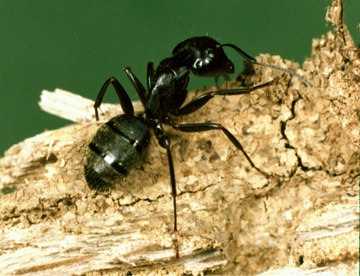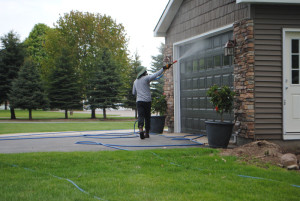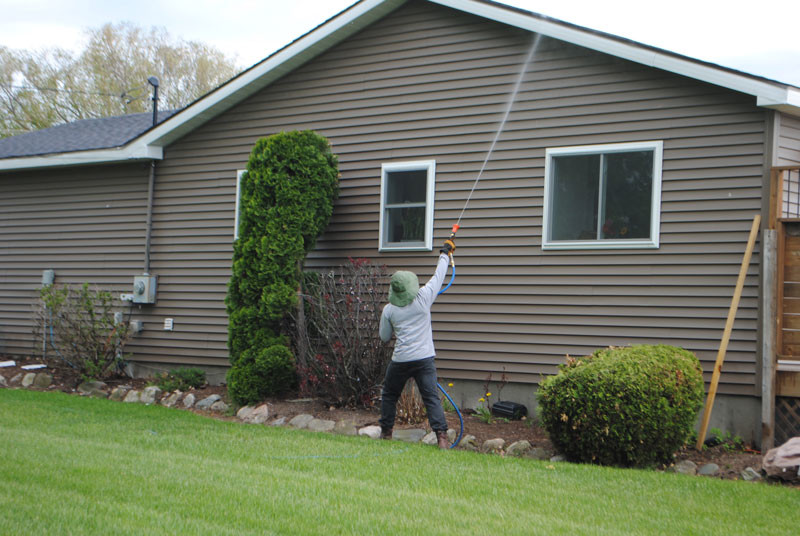As of March 24th at 12:01 AM, Michigan is under a “Stay Home, Stay Safe” executive order due to the COVID-19 pandemic. This order will last 21 days, at least, and will significantly affect many of our resident’s lives. This has caused many of our residents to fall into somewhat of a panic (hello, toilet paper shortage). Many of you have asked how this affects the services we provide, especially as spring progresses and more critters awaken from their long winter’s nap. That being said, there are a few items we would like to address; hopefully, this will clear up any confusion you may have before making a call.
According to the executive order, businesses deemed as essential can continue to operate; even as more quarantines and restrictions are put in place. Both the National Pest Management Association and Michigan Pest Management Association firmly believe that structural pest control is an essential industry; one that must continue to provide the valuable services we offer during the COVID-19 pandemic. These services protect our customers from not only emotional distress but more importantly, from an array of diseases. However, despite operating as usual, the questions do not stop there, and for a good reason!
There are many questions surrounding COVID-19, including how it spreads. With spring progressing, there have been concerns about potential disease transmission from insects. It is imperative to note that COVID-19 does not spread via pests. While the most accurate and up-to-date resource for information on COVID-19 remains the Centers for Disease Control and Prevention, we’ll dive deeper into the differences between common vector-borne diseases and various coronaviruses to help dispel any myths about transmission.
What are Vector Pests?
Vector pests such as mosquitoes and ticks play significant roles in the transmission of many serious diseases. Worldwide, mosquitoes are the leading vector pests responsible for the transfer of infections to humans. They are responsible for spreading malaria, West Nile virus, Zika virus, Eastern equine encephalitis (EEE), yellow fever, and others. Ticks are responsible for the transmission of Lyme disease, the most common vector-borne infection in the United States; as well as many others such as Rocky Mountain spotted fever, ehrlichiosis, babesiosis, and anaplasmosis.
What are Coronaviruses?
Coronaviruses, which are common to humans, are well-known causes of the common cold and flu and were first identified in the 1960s. There are four main subgroups of human coronaviruses; they mainly transmit through contact with the bodily fluids of an infected person. This is done by simple acts such as coughing and sneezing. Droplets, often microscopic, from the infected person are inhaled by someone nearby (usually within a three to six-foot radius); also via contact with a contaminated surface— such as one that was just coughed or sneezed upon, then inadvertently touching one’s face or eyes; or by something as simple as sharing an eating utensil. This is why it is imperative to wash hands and refrain from touching our faces during this time.
How is COVID-19 Different From Other Coronaviruses?
Middle East Respiratory Syndrome (MERS), Severe Acute Respiratory Syndrome (SARS), and now COVID-19 are zoonotic coronaviruses– meaning they are viruses that have jumped the species barrier from their regular animal hosts to humans (Think Bird and Swine flu). This happens through direct contact with an infected animal, as well as indirect contact or eating contaminated food. Zoonotic diseases are also prevalent, and once they transmit to humans, they continue to spread through person-to-person contact as well. This makes proper handwashing and other preventative actions outlined by the CDC paramount to public safety.
Can Pets Contract Coronavirus?
Dogs and cats can contract certain types of coronaviruses, such as the canine respiratory coronavirus, but we believe this specific coronavirus to not be a health threat to pets. The CDC says that “while this virus seems to have emerged from an animal source, it is now spreading from person-to-person.” The CDC also states that “there is no reason to think that any animals or pets in the United States might be a source of infection with this novel coronavirus.” Fortunately for pet owners, the virus survives best on smooth surfaces, such as countertops and doorknobs. Porous materials, such as pet fur, tend to absorb and trap pathogens, making it harder to contract them through touch.
While the world is in an uproar unlike any we’ve seen, rest easy that we are doing as much as we can to ensure the protection of your home. We have received training in the use of proper PPE (personal protective equipment); as well as practicing proper hygiene to cut back on the spread of any germs. So, if during this 21 day period you hear/see any unwelcome guests around your home (in-laws not included) please do not hesitate to call. Remember: no question is a stupid question, and we look forward to answering yours!
AKC Staff. “Can Dogs Get Coronavirus?” American Kennel Club, American Kennel Club, 20 Mar. 2020, www.akc.org/expert-advice/news/can-dogs-get-coronavirus/.
“Animals and Coronavirus Disease 2019 (COVID-19).” Centers for Disease Control and Prevention, Centers for Disease Control and Prevention, 16 Mar. 2020, www.cdc.gov/coronavirus/2019-ncov/prepare/animals.html.



